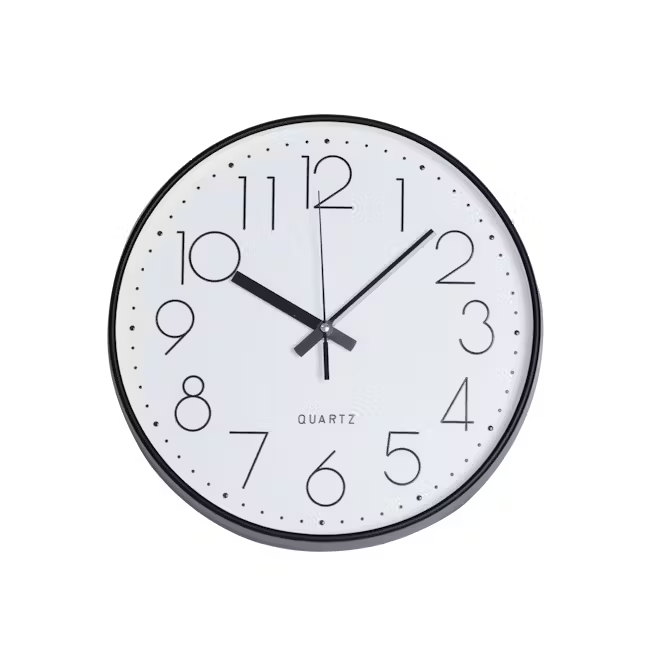Wall clocks, those ubiquitous timekeepers that adorn our homes and offices, have been an integral part of human life for centuries. Their evolution, from simple sundials to intricate mechanical masterpieces, reflects the ingenuity and technological advancements of civilizations throughout history. In this article, we will delve into the fascinating history of wall clocks, exploring their origins, their development over time, and their enduring significance in contemporary society.
Origins and Early Developments
The earliest timekeeping devices were sundials, which relied on the position of the sun to determine the time of day. While effective in sunny conditions, their accuracy was limited and they were impractical during nighttime or cloudy weather. As civilizations advanced, so too did their need for more reliable and accurate timekeeping instruments.
The ancient Egyptians developed water clocks, or clepsydras, which used the flow of water to measure time. These devices were more accurate than sundials and could be used both day and night. However, they were complex to construct and maintain, and their accuracy was still limited.
In the 13th century, mechanical clocks began to appear in Europe. These early clocks were large and heavy, often housed in towers or churches. They were powered by weights and used gears and escapements to regulate the movement of the hands. While these clocks were a significant improvement over earlier timekeeping devices, they were expensive and difficult to manufacture.

The Rise of Pendulum Clocks
A major breakthrough in clockmaking came with the invention of the pendulum clock in the 17th century. The pendulum, a swinging weight, provided a more accurate and stable source of timekeeping than earlier mechanisms. Pendulum clocks were smaller and more affordable than their predecessors, making them accessible to a wider range of people.
The development of the pendulum clock led to a surge in clockmaking activity across Europe. Clockmakers in countries such as England, France, and Germany produced a variety of styles and designs, each with its own unique features. Some clocks were adorned with intricate carvings and decorative elements, while others were designed for maximum accuracy and reliability.

The Industrial Revolution and Mass Production
The Industrial Revolution in the 18th and 19th centuries had a profound impact on the production of wall clocks. Advances in manufacturing technology made it possible to produce clocks in large quantities and at a lower cost. This led to a significant increase in the availability and affordability of wall clocks.
During the 19th century, a variety of new clock designs emerged. These included the grandfather clock, a tall, freestanding clock with a decorative case, and the mantle clock, a smaller clock designed to sit on a mantelpiece. Clocks were also produced in a wide range of materials, including wood, brass, and marble.
The 20th Century and the Rise of Electric Clocks
The 20th century saw the development of electric clocks, which were powered by electricity rather than mechanical mechanisms. Electric clocks were more accurate and reliable than mechanical clocks and did not require winding. They were also quieter and easier to maintain.
The widespread adoption of electric clocks led to a decline in the popularity of mechanical clocks. However, mechanical clocks continued to be valued for their aesthetic appeal and historical significance. Many collectors and enthusiasts continue to seek out and restore antique mechanical clocks.

Using wall clocks as a focal point
Wall clocks, once purely functional timekeeping devices, have evolved into versatile decorative elements that can serve as striking focal points in a room. By strategically placing a wall clock and choosing the right design, you can instantly transform a space and create a captivating atmosphere.
Choosing the Perfect Wall Clock
- Size Matters: The size of the wall clock should be proportionate to the room. A large clock can be a focal point in a spacious room, while a smaller clock can add a touch of elegance to a more intimate setting.
- Style and Design: Consider the overall design style of your room. A traditional clock with ornate details would complement a classic interior, while a modern clock with clean lines would be ideal for a contemporary space.
- Materials and Finishes: The materials used in the clock can also influence its impact. For example, a metal clock with a distressed finish can add a touch of industrial charm, while a wooden clock with intricate carvings can create a warm and inviting atmosphere.
Placement Strategies
- Above the Fireplace: A wall clock placed above a fireplace is a classic placement that adds a touch of symmetry and elegance to a room.
- Over the Bed: A wall clock can be a focal point in a bedroom, especially if it is placed above the bed. Choose a clock with a calming design to create a relaxing ambiance.
- In the Dining Room: A wall clock in the dining room can help set the pace for meals and create a sense of order. Consider a clock with a vintage or antique aesthetic to add a touch of nostalgia.
- In the Living Room: A wall clock in the living room can be a conversation starter. Choose a clock with a unique design or a bold color to draw attention.
Incorporating Wall Clocks into Different Design Styles
- Traditional: A grandfather clock or a mantle clock with ornate details can be a focal point in a traditional-style room.
- Modern: A minimalist clock with clean lines and a neutral color can be a striking focal point in a contemporary space.
- Industrial: A vintage or repurposed clock with a distressed finish can add a touch of industrial charm to a room.
- Bohemian: A colorful or eclectic wall clock can be a statement piece in a bohemian-inspired room.
- Scandinavian: A wooden wall clock with a simple design can be a focal point in a Scandinavian-inspired space.
By carefully selecting a wall clock and considering its placement, you can create a captivating focal point that adds both style and functionality to your interior design. Whether you’re looking to add a touch of elegance, create a sense of order, or simply make a statement, a well-chosen wall clock can transform your space.

Wall Clocks in Contemporary Society
In today’s world, wall clocks are no longer essential for timekeeping. Most people rely on their smartphones, watches, or computers to tell time. However, wall clocks continue to play an important role in our homes and workplaces. They add a touch of style and personality to our surroundings and can serve as a focal point in a room.
Wall clocks are also available in a wide variety of styles and designs, from traditional grandfather clocks to modern minimalist models. There are clocks made from a variety of materials, including wood, metal, and plastic. Some clocks are even equipped with additional features, such as temperature gauges, humidity sensors, and Bluetooth connectivity.

Incorporating wall clocks into various design styles
Wall clocks, once purely functional timekeeping devices, have evolved into decorative elements that can enhance the aesthetic appeal of any space. Their versatility allows them to seamlessly integrate into a variety of design styles, from classic to contemporary. Here’s a look at how wall clocks can complement different interior design aesthetics:
Traditional Design
- Grandfather Clocks: These iconic tall clocks with intricate carvings and ornate details are a staple of traditional design. They add a touch of elegance and history to a room.
- Ornate Mantel Clocks: Placed on a mantelpiece, these decorative clocks with brass accents and glass cases complement the classic look of traditional homes.
Modern Design
- Minimalist Clocks: Sleek and simple designs with clean lines and neutral colors are perfect for modern interiors. These clocks become functional works of art.
- Geometric Clocks: Clocks with bold geometric shapes and patterns add a touch of contemporary flair to a space. They can be a focal point in a room.
Industrial Design
- Vintage Clocks: Repurposed or vintage industrial clocks, such as factory clocks, bring a sense of history and character to industrial-style interiors.
- Metal Clocks: Clocks made of raw metals like iron or copper complement the industrial aesthetic. They add a rugged and masculine touch.
Bohemian Design
- Ornate Clocks: Oversized clocks with intricate details and colorful designs add a touch of eccentricity to bohemian spaces.
- Vintage Clocks: Flea market finds or antique clocks with unique shapes and patterns can be a statement piece in a bohemian room.
- Wooden Clocks: Natural wood clocks with simple designs and clean lines are a perfect fit for Scandinavian-inspired interiors. They add warmth and a sense of nature.
- Minimalist Clocks: Sleek, minimalist clocks with neutral colors complement the clean lines and uncluttered aesthetic of Scandinavian design.
Tips for Incorporating Wall Clocks into Your Design
- Consider the Scale: Choose a clock that is the right size for your space. A large clock can be a focal point, while a smaller clock can blend in with the surroundings.
- Think About Materials: The materials used in the clock should complement the overall design of the room. For example, a metal clock would be appropriate for an industrial-style space, while a wooden clock would be better suited for a Scandinavian-inspired room.
- Pay Attention to Details: The details on the clock, such as the hands, the case, and the dial, can add personality and character to the piece.
- Don’t Be Afraid to Experiment: Have fun and experiment with different styles and designs. A unique wall clock can be a conversation starter and add a personal touch to your home.
By carefully considering the design style of your space, you can choose a wall clock that enhances the overall aesthetic and adds a touch of personality to your home.
The history of wall clocks is a fascinating journey that spans centuries and continents. From the early sundials of ancient Egypt to the modern electric clocks of today, wall clocks have played a vital role in human society. They have not only served as timekeeping devices but have also become symbols of craftsmanship, artistry, and cultural heritage. As we continue to embrace new technologies, wall clocks will undoubtedly remain a cherished part of our homes and workplaces for generations to come.










